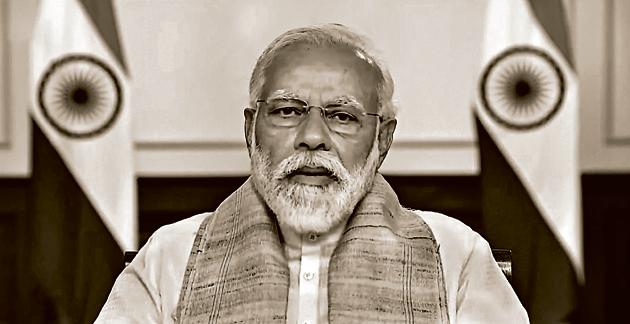After Galwan, what next for India-China ties?
New Delhi has a range of options. What matters is the objective it sets for itself in the immediate and long-term
In a brief statement condoling the death of 20 Indian Army personnel, including a colonel in clashes with China’s People’s Liberation Army (PLA) troops along the Line of Actual Control (LAC), Prime Minister (PM) Narendra Modi emphasised that this loss of precious lives will not go in vain and that India’s traditional posture of restraint should not be mistaken for a lack of national resolve apropos territorial integrity and sovereignty. He further added that “differences should not be allowed to become disputes”, but that is where the India-China relationship is now poised and it could go further south given the prevailing mood of anger and anguish in the country.

While there are unconfirmed reports about the number of PLA troops killed, it merits recall that China does not release any official numbers about casualties sustained in battles and wars, much less in skirmishes of this nature. For instance, the Chinese casualties in the October 1962 border war with India were discretely shared in the internal military history documents of PLA only in the mid 1990s. It is important to note that there will be a marked difference between the transparent approach of a robust democracy such as India and the cloistered approach of an authoritarian regime such as China.
Various reasons are being advanced as to why PLA acted in the barbaric manner that it did (attacking Indian troops with lethal batons embedded with nails and spikes – if some reports are true). The reasons for the eastern Ladakh incursion and consolidation by PLA will have to be addressed at a later date, perhaps in the manner that the Kargil Review Committee was convened and necessary policy inadequacies will have to be redressed.
But the focus at the moment should not be on the “why”, but on “what next”, for the Wuhan-Mamallapuram bonhomie will now tempered with a dose of reality.
India will have to carefully think through its options and remain resolute. The loss of a colonel is a big setback for any army and the Indian Army will respond in a manner that it deems appropriate. The 1967 battles of Nathu La and Cho La when India lost 100 lives but erased the humiliation of October 1962 will be part of the collective memory of PLA.
But the options will go beyond the military domain, and it will actually be determined by the objectives that Delhi sets for itself — both for the immediate and the long-term. On the face of it, getting China to pull its troops back to the status quo position that prevailed in eastern Ladakh will be the immediate priority and objective but, desirable as it is, realising that normative goal will throw up its challenges.
China is currently in a more advantageous position tactically both in the Galwan Valley and other areas it has occupied and fortified. This places India in a less-than-favourable position as far as the current negotiations are concerned. China has honed the art of moving forward assertively in territorial disputes and then ostensibly stepping backward in “good faith”, but finally ensuring that its own territorial creep becomes a de facto reality. This was noted in the Doklam experience. And there should be no illusions about China’s inherent orientation towards territory and strategic geography. India, alas, has not shown such resolve or acumen about strategic geography or learning from military history.
While democracies thrive on objective dissent and debate, they must also exude national unity and consensus during times of crisis. The current challenge with China calls for closing of ranks among the political parties. It is encouraging to note that an all-party meeting will be convened on Friday where PM Modi is expected to brief party leaders about the Galwan setback and the options that lie ahead for India in relation to China.
The history of the last 60 years indicates that China has been able to exploit the political and ideological divisions within India to its benefit in shaping the narrative of the troubled bilateral relationship. This is part of the “Three Warfares” framework that Beijing has invested in as part of its comprehensive military modernisation.
China will remain part of the economic and technological eco-system of the 21st century and India’s choices cannot be binary. Whether the post pandemic word morphs into sullen bi-polarity or a more flexible cluster of democracies remains moot. This will determine India’s posture.
For PM Modi, the Galwan challenge has the potential to transmute to either the trauma of Jawaharlal Nehru and 1962 or the triumph of Margaret Thatcher and Falklands of 1982. The next few months will be critical for India and Asia.
C Uday Bhaskar is director, Society for Policy Studies, New Delhi
The views expressed are personal



